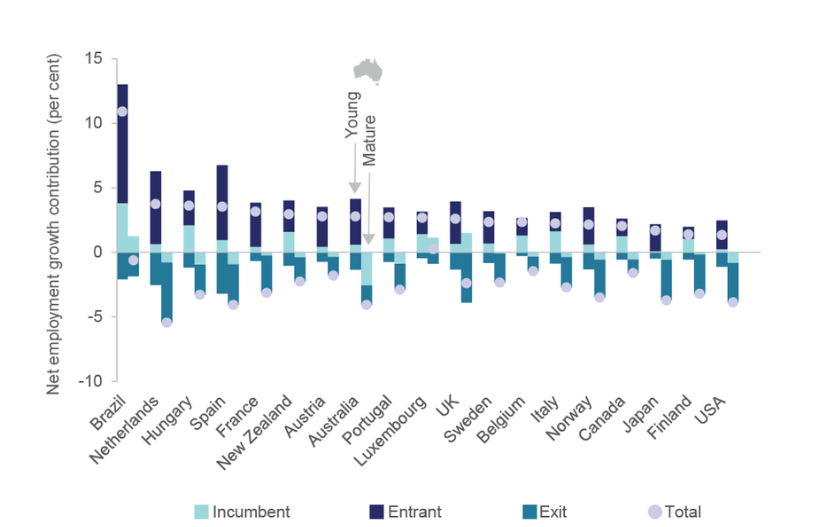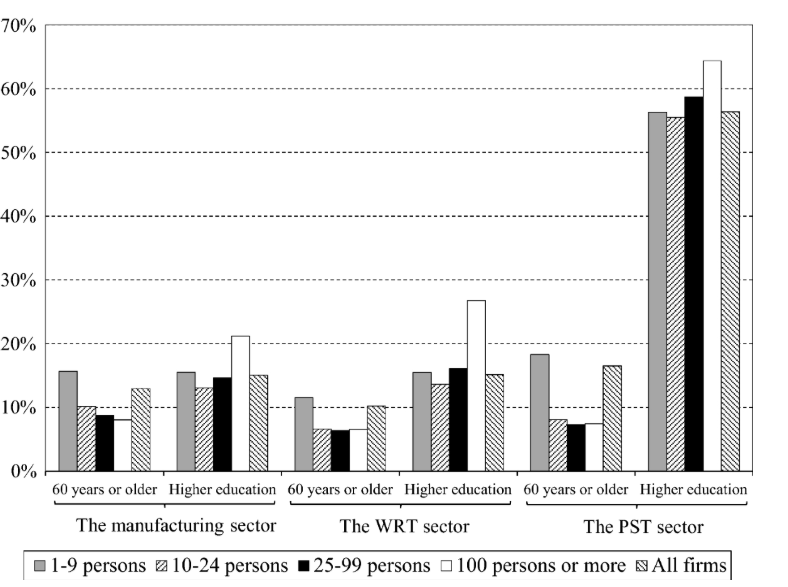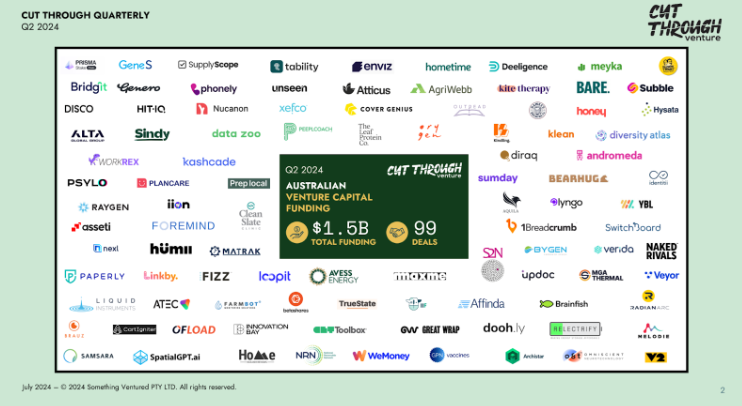Australia’s economic engine isn’t running on the fuel most people think.
New research from the e61 Institute has blown apart a common myth. It’s not small businesses that drive growth. It’s young ones.
The difference matters more than you might think.
The Surprising Truth About Job Creation
Firms under five years old punch well above their weight in Australia’s economy. They account for 31% of all companies but create 40% of new jobs.
That’s impressive. But here’s where it gets interesting.
Brand new employers – businesses in their first year-make up just 5% of total employment yet generate 22% of job creation. This group of fresh startups delivers an outsized contribution that older, established businesses simply can’t match.
Young firms contribute 6 percentage points to annual headcount growth, while small old firms detract from annual headcount growth by 4.5 percentage points.
The contrast is stark. Small old firms-those over five years with fewer than 15 employees-represent 50% of all businesses and hold 20% of jobs. Yet they contribute only 15% to job creation and account for 41% of job destruction.

Net contributions to economic growth over time by firm type. [Source: e61 Institute]
Why The First Two Years Matter Most
A startup’s fate is largely sealed in its first 24 months.
Analysis shows the largest increases in headcount and value added happen during a firm’s first two years. This is when companies are most dynamic and when their long-term trajectory becomes clear.
After age two, the average firm no longer makes net positive contributions to employment or value creation.
That doesn’t mean all young firms succeed equally. High performers at the 90th percentile start with twice the headcount of average firms. By age five, these standout businesses employ double the workers and generate twice the value of typical companies their age.
They’re also 40% more productive than the average firm.
By age five, 90th percentile firms record roughly twice the headcount and value added of the average firm.
But survival isn’t guaranteed. Around 5% of new firms exit after just one year. Nearly 40% don’t make it to their fifth birthday.
The Productivity Problem Nobody’s Talking About
New businesses don’t start productive. They start learning.
New firms begin operations at a productivity level around 40% less than the industry benchmark. As they mature, their productivity improves, with surviving firms converging with incumbent productivity by age five.
The median young firm never catches up to industry standards. That reality exposes a harsh truth-not every startup is built to scale.
High performers buck this trend. Top-tier firms start 15% above industry average and reach 45% above by age five.

Relative firm productivity by age showing high performers versus average firms. [Source: e61 Institute]
Exit Matters More Than You Think
Creative destruction isn’t just economic theory. It’s essential.
Businesses that exit are around 20% less productive than the industry average five years before they close. Their exit allows resources like labour and capital to move to more productive firms.
But firm exit rates have been falling in Australia. That’s not good news.
When unproductive businesses linger, they tie up resources that could fuel better performers. The result? Slower economic growth and reduced innovation.
The e61 research warns that the proportion of new employers has declined from 15.1% of all businesses in 2004-05 to 10.7% in 2024-25. Report reveals startups’ outsized economic contribution
The Funding Reality for Australian Startups
Australian startups raised $4 billion across 414 deals in 2024, marking the third-highest annual total on record despite global economic headwinds.
The venture capital landscape shows clear momentum:
- Pre-seed median deal size hit a record high of $1 million
- Seed rounds averaged $3 million, also a record
- 74% of investors expect higher deal volumes in 2025
- Growth anticipated in AI, HealthTech, and ClimateTech
In Q2 2025 alone, Australian startups announced $812 million in capital raised across 65 VC rounds and 11 accelerator rounds.
Key sectors attracting investment include:
- FinTech (highest funding)
- Climate Tech (second highest)
- BioTech/MedTech (third highest)
- HealthTech (highest deal count)
Major deals in Q2 2025 included Airwallex, RayGen, Amber, Poly Activa, and Seer.

Australian venture capital funding by quarter showing recovery trajectory. [Source: Cut Through Venture]
Why Government Policy Gets It Wrong
Here’s the uncomfortable truth: governments love supporting small businesses.
Tax breaks. Lighter regulations. Grants. All designed to help the little guy compete.
But the research shows size-based policies miss the mark.
Policymakers should avoid size-based business policies. Size alone is a particularly poor indicator of economic potential. Such policies risk supporting businesses unlikely to contribute meaningfully to future growth.
The problem? A 50-person company operating for 20 years isn’t the same as a five-year-old startup with 50 employees.
One is coasting. The other is climbing.
e61 research manager Lachlan Vass puts it bluntly: “Our findings demonstrate the importance of startups to Australia’s economic growth, especially compared to older small businesses. However, fewer new firms are being created and fewer old firms are shutting down, potentially stifling our economic potential.”
What About Mining and Tech Sectors?
Australia’s startup ecosystem ranks 12th globally and leads the Australia-Oceania region. Nine Australian startups have achieved unicorn status by exceeding $1 billion in valuation, with the top three collectively raising over $40 billion.
Success stories include:
- Canva – graphic design platform valued at multiple billions
- Airwallex – global financial infrastructure for businesses
- Immutable – blockchain-based gaming platform
The mining sector in Australia continues driving substantial economic value, but younger exploration companies and innovative mining technology startups are reshaping the industry through new approaches to extraction, processing, and sustainability.
Meanwhile, the Australian economy faces headwinds from declining mining earnings, making the contribution of innovative young firms across all sectors increasingly vital.
Government Support and Grants
The NSW government announced $80 million for its Innovation Blueprint in 2025, signalling renewed focus on startup support at state level.
Available funding programs include:
- R&D Tax Incentive – tax offset for eligible R&D activities
- Export Market Development Grants – reimbursement for export-related expenses
- State-level programs – varying by jurisdiction with amounts from $10,000 to $500,000
However, experts argue this support should focus on high-growth potential rather than business size.
What This Means for Investors and Entrepreneurs
The data presents clear implications:
For investors:
- Early-stage backing carries higher risk but drives disproportionate economic returns
- Look for scalable business models and strong founding teams
- Monitor first-year performance as a key indicator
- Diversification remains essential given high failure rates
For entrepreneurs:
- The first two years are make-or-break
- Productivity improvements must happen fast
- Exit strategy matters from day one
- Not all businesses need to scale-but those that do drive the economy
For policymakers:
- Shift focus from size to age and growth potential
- Reduce barriers to firm exit
- Support workforce transitions when companies fail
- Stop incentivising businesses to stay small
The International Context
Australia’s startup challenges mirror global trends. The US research shows similar patterns-young firms create jobs while small old firms don’t.
But Australia lags in some areas. Silicon Valley, London, and Singapore maintain higher rates of firm entry and exit, creating more dynamic economies.
The question isn’t whether Australia can compete. It’s whether policymakers will adapt quickly enough.
Looking Ahead
The e61 research delivers an uncomfortable message. Australia’s traditional approach to business support needs overhaul.
Supporting small businesses sounds good politically. But the data says we should support young businesses instead.
The difference isn’t semantic. It’s structural.
Future work will examine the roles of different types of entrepreneurs and how firm activity varies across sectors, regions, and time.
As Australia navigates global economic uncertainty, declining dynamism, and productivity challenges, getting this right matters more than ever.
The young and restless firms aren’t just part of Australia’s economic future. Right now, they’re carrying the load while everyone else watches.
Also Read: Australia’s First Middle East Trade Deal Takes Effect: A New Era for Mining and Energy Exports
FAQs
1.How many startups operate in Australia?
Australia has over 3,500 active startups across various sectors, with the ecosystem ranking 12th globally. The country has produced nine unicorn companies valued over $1 billion each.
2.What percentage of Australian jobs come from young firms?
Firms under five years old create 40% of new jobs while representing just 31% of all companies. First-year employers alone generate 22% of job creation despite being only 5% of total employment.
3.Why do small old firms drag down the economy?
Small old firms (over five years with under 15 employees) account for 41% of job destruction and contribute only 15% to job creation despite representing 50% of all businesses and 20% of employment.
4.What industries attract the most startup investment in Australia?
FinTech receives the highest funding, followed by Climate Tech and BioTech/MedTech. HealthTech leads in deal count, reflecting strong investor interest across technology and innovation sectors.
5.How much venture capital do Australian startups raise annually?
Australian startups raised $4 billion across 414 deals in 2024. Q2 2025 alone saw $812 million in capital raised, with 74% of investors expecting higher deal volumes through 2025.












